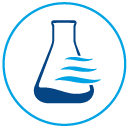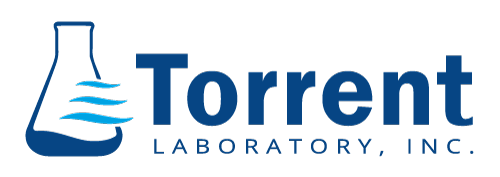
Vapor Intrusion and its Highly Scientific Solutions Explained
1. An Overview of Vapor Intrusion
Vapor intrusion (VI) is the migration of chemical vapors from the subsurface into buildings. VI is a frequent problem at sites that have been found to be contaminated through industrial chemical production, petroleum products, or the dumping of chemicals. If uncontrolled, chemical vapors can migrate into buildings and cause risks to human health. Vapor migration in the soil subsurface, through building foundations, and within buildings is complex and influenced by a variety of natural and human-caused factors.
These factors include influences such as climate (I.e., temperature, precipitation, barometric pressure), building conditions (i.e., type of foundation, age, size), and heating, ventilation and air conditioning (HVAC) operation. The combination of these varying influences often results in significant fluctuations in subsurface and indoor air vapor concentrations. Because there is a possibility for such high variability, there is also an increase in the probability of false negatives. As a result there have been growing concerns that potential risks associated with VI into indoor air will be underestimated.
Vapors in the soil near a building can be transported by both diffusion (transport from high to low concentration), and advection (transport from high to low pressure) into indoor air via cracks or other openings. Advection takes place when negative indoor air pressure in relation to the subsurface pressure that is in contact with the building leads to the transport of vapors into indoor air. Building heating, ventilation, and air conditioning (HVAC) systems and weather conditions (e.g., barometric pressure, wind, and temperature) are all involved in the pressurization of a building.
2. Why is Vapor Intrusion testing necessary?
To begin with, it is critical to address vapor intrusion in order to protect people from exposures to indoor vapors that may pose serious health risks. For this reason the EPA and most states have established rules that require vapor intrusion assessment of buildings and land. Known as Phase I Environmental Site Assessments, they are commonly required before any sale of buildings as well as prior to any new construction.
The state of California outlines a four-step process for Vapor Intrusion testing. They do so in order to determine whether buildings located near known or suspected subsurface VFC contamination have been affected by VI and could pose health risks to occupants. Their four-step vapor intrusion process follows these four steps:
- Prioritize for a VI assessment any buildings located near a source of contamination.
- Determine whether buildings have potential for VI by collecting exterior soil gas samples.
- In any building found to have potential VI risks, collect indoor air, outdoor air, and sub slab soil gas samples.
- Based on both indoor air and soil gas concentrations, evaluate the need to manage current and future VI risk.
If an assessment results in the discovery of vapors containing Volatile Organic Compounds (VOC) then the buildings must begin a process of vapor intrusion mitigation in order for them to be deemed safe again for occupancy, or the soil mitigated of contaminants and plans for building ventilation set in place before any construction can begin.
3. Effective Methods for Resolving Vapor Intrusion Risks
The effective methods for resolving VI problems are known as vapor intrusion mitigation. Because toxic vapors can build up below a foundation or slab, testing whether soil vapors beneath the slab, soil vapors in the vicinity of the building and air quality within the building meet or exceed regulatory requirements is the first step in vapor intrusion assessment and mitigation. Whenever tests reveal levels of VOCs in excess of regulations a vapor intrusion mitigation plan must be prepared and presented to the regulatory agency for approval.
These plans for mitigation will include some combination of soil removal, sub slab ventilation, other ventilation sites on the property, identification of building suction points for the placement of exhaust fans in the building to pull out and discharge the vapors through a ventilations system that releases them in a safe place and manner. Whatever efforts are approved and taken become the building’s vapor mitigation system.
A vapor mitigation system is complex and can be expensive and time consuming, especially if the mitigation plans do not meet regulatory standards for approval quickly. For the very best results it is wise to seek the expertise of an environmental testing lab with an experienced track record in both vapor intrusion assessment and mitigation. They will help keep occupants of buildings on your property safe from toxic gases and help their clients remain in compliance with all the testing requirements and maintain liability protections.
An experienced laboratory is also much more likely to discover existing VI mitigation structures on site that may only need to be retrofitted to meet the latest regulations. They can also work with developers to design and incorporate a mitigation system into property development plans before construction. Any scenario that keeps the costs for a vapor mitigation system lower while maintaining full compliance with regulations will be vital for maintaining property value and development timelines.
4. Conclusion
Torrent Laboratory has all of the advanced capabilities you need for a successful vapor mitigation system. These include as part of your vapor intrusion assessment:
- Soil Vapor Testing
At Torrent, we offer two types of soil vapor intrusion sampling: regular and low-level reporting.
The regular TO-15 test method, which has reporting limits of around 0.5 ppbv, is sufficient for most soil vapor monitoring. For residential or commercial environmental screening levels (ESLs), we offer low-level reporting. We use the TO-15 SIM technique, a sensitive methodology that can report data at the 0.005 ppbv level, ideal for the most precise applications.
- Ambient Air Testing
As air analysis has evolved, so have we. In addition to offering ambient air testing, we continually invest in new methods, technologies, and procedures to offer the most advanced testing available. We supply data for a range of air methods, including NIOSH, OSHA, ASTM, and EPA Air Compendium Methods (TO, CO, IO). Our unwavering commitment to quality is inspired by increasing environmental awareness and accountability, our clients’ needs, and our dedication to the continual advancement of testing and analysis.
And as part of your vapor intrusion mitigation:
- Ambient Air Monitoring
For the most accurate results and for full remediation we offer ambient air monitoring services to give you full assurance and peace of mind.
Torrent Lab is always committed to working to provide you with the most innovative testing technologies available to us. In this way we will continually offer the very best results for your vapor mitigation system. Torrent Laboratory provides the most advanced capabilities in the region. Our full-service lab offers a host of advantages including:
- Highest certifications
- Fastest possible TAT in the industry
- Unrivaled technical and customer support
- Unparalleled on-time performance
- Impeccable quality
- Competitive pricing
- Convenient geographic location
Trust Torrent as your premier environmental testing laboratory for California and Hawaii.






